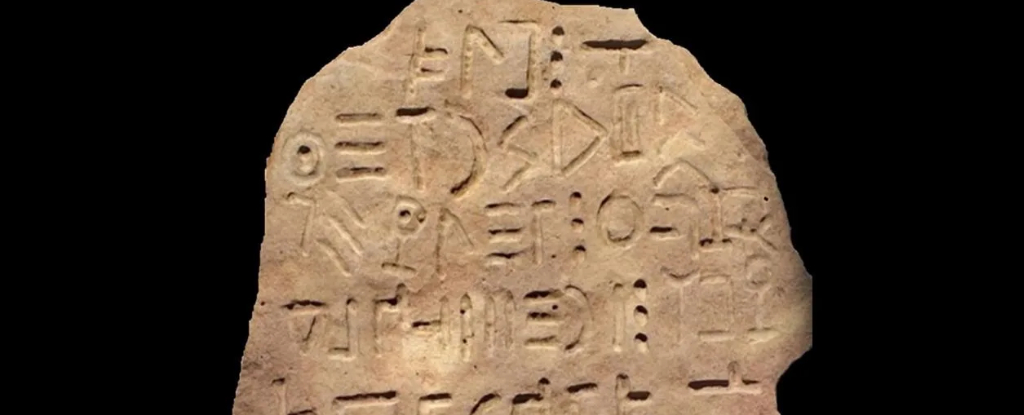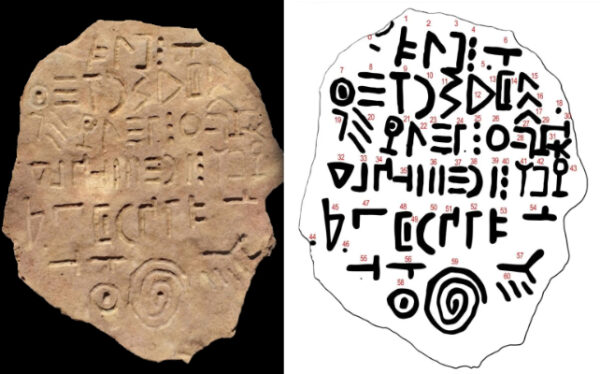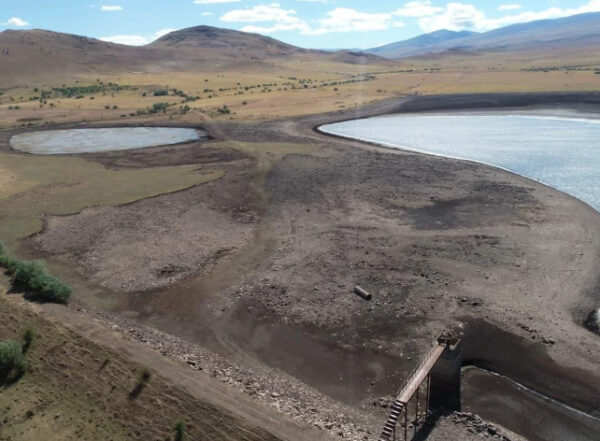
Posted on 12/17/2024 12:27:38 PM PST by Red Badger

Bashplemi Lake tablet. (Shengalia et al., Journal of Ancient History and Archaeology, 2024)
A few years ago, late in the fall of 2021, locals fishing Georgia's Bashplemi Lake in the municipality of Dmanisi came across a long-forgotten piece of history – a small stone tablet inscribed with dozens of mysterious symbols.
Now a team of archaeologists from across Georgia has confirmed the impressions represent samples of a script that has never been documented, raising questions on the spread and preservation of writing across the transcontinental region.
Roughly the size of an iPad, the basalt tablet features just 39 different characters in 60 inscriptions written left to right across seven lines. Each carved symbol began as a series of holes made with a cone-shaped drill, connected into flowing lines with a smooth, round tool.
Who crafted the symbols, or why, is open to speculation. Perhaps they dictate the spoils of a military campaign. Maybe they're details on construction, or even a receipt for a gift to the gods.
An analysis using optical and electronic microscopy and a cursory examination of the surroundings by air and archeological record suggest the tablet's origins lay amid the surrounding basalt, possibly during the region's Bronze Age.

Bashplemi Lake tablet (left) with its 60 inscriptions in bold (right). (Shengalia et al., Journal of Ancient History and Archaeology, 2024) Although new to researchers, the 'letters' are similar enough to scripts from the Middle East and undeciphered symbols from pre-Christian Georgia to make forgery by non-scholars a relatively unlikely explanation for the finding.
"We believe that at this stage, there is no reason to doubt the authenticity of the artifact," the team writes in a published report.
The region's written records date back to a list of clergy taking part in a council in the early 6th century, coinciding with the spread of Christianity through the region. Prior to that, archeology provides evidence of settlement and metalworking dating back thousands of years, with fossils of early human relatives reaching further through time.
Beyond the Dmanisi region, Georgia's ancient territories were a melting pot of cultures that left their mark in a variety of scripts. Epigraphs written in Greek, Hebrew, Aramaic, and Middle Persian have been uncovered in the ancient capital of Mtskheta, 20 kilometers (about 12 miles) north of the country's current capital, Tbilisi.
Fragments of undeciphered, potentially cryptographic images have been found in the nation's mountainous regions, while various seals found across the land further hint at an evolution of scripts that are yet to be decoded.
Across the classical world, references to other languages to the east can be found. Greek and Roman authors maintained the existence of an ancient script attributed to the 'Colchis' people, who inhabited lands east of the Black Sea that were the destiny of the famed Argonauts.
Though no traces of the writings remain, some argue ornate markings on ancient pottery found in Georgia's west could represent traces of Colchis writing.
With such a diversity of inscriptions, pictographs, and alphabets throughout lands that represent a critical bridge between Europe and Asia, it might not be all that surprising to uncover yet another example of strange writing divorced from known history.

Bashplemi Lake in central Georgia. (Shengalia et al., Journal of Ancient History and Archaeology, 2024) The letters' shapes might resemble Middle Eastern symbols, while mirroring the seals of Bronze and Early Iron Age Georgia. The researchers note the signs are also reminiscent of Proto-Kartvelian script – a language that would give rise to modern dialects and languages of the region.
As with all undeciphered scripts, significant discoveries acting as some kind of Rosetta Stone are vital for linking the known with the unknown. Future archaeological digs might yet connect the Bashplemi Lake tablet with an ancient attempt to preserve a moment of the past in stone.
"Archaeological excavations carried out at this archaeologically abundant location will provide answers to all other questions," the team writes.
This research was published in the Journal of Ancient History and Archaeology.
Here exposed basalt has (I guess) a higher iron content, exposed Cretaceous era basalt is rust colored.
Even given that, if you chiseled letters into it they would probably show the unoxidized basalt color.
Just watched a great YouTube video on that.
Evidence of “ Vikings” hundreds of years before they were infamously historical Vikings.
Thanks. I can’t imagine chiseling basalt without steel tools!
I can but it a LOT of little pieces of basalt to carve out a character.
Then there’s the problem of sharpening the small pieces of basalt...
They could have it upside down.
Looking at the large spiral figure at the “bottom”, it occurs to me that this could be a naming symbol, like a crest or corporate symbol at the top of a letterhead.
.
The history of Colchis is interesting. It was an important source of saffron, which in addition to being used to make rice golden, was important for medical uses. It is still being offered as a valuable dietary supplement. The Argonaut’s search for the Golden Fleece may in fact have been referring to the Search and trade in saffron. The drug Colchisine is derived from that. Saffron can still be bought from some supplement companies for health promoting purposes. I plan to get some for myself. I saw some “paintings” from the ruined cities of Thera which were destroyed by the huge volcanic eruption around 1500 BC. THey showed women/goddesses dancing and holding the saffron crocuses.
The tablet was decoded and found to contain song lyrics.
Documentary here: https://www.youtube.com/watch?v=ggGzE5KfCio
I’ve been working on this all day and have only managed to decode one word, Ovaltine.
It is the harvesting not the growing that is hard.
Strangely Engraved Rock Is Giant ‘Treasure Map’, Archaeologists Say
Science Alert | 18 October 2023 | By ANTOINE AGASSE, AFP
Posted on 10/18/2023, 3:42:02 PM by Red Badger
https://freerepublic.com/focus/chat/4190576/posts
A Map to a Lost Bronze Age Kingdom? | The Mystery of the Saint Belec Slab
10:44
The Historian’s Craft
108K subscribers
16,643 views
December 13, 2024
The European Bronze Age exists just beyond the grasp of our surviving written sources from antiquity, in many ways like a world cloaked in shadow, ever just outside the reach of light. We have, instead, plenty of archaeology on the European Bronze Age but how to make sense of it is often difficult and not clear.
In 1900, an artifact was discovered from the period—The Slab of Saint Belec, named after the barrow of Saint Belec in the Armorican Peninsula. A mystery for over a century, this is being changed by a recent study which suggests it is not only one of the oldest maps in the world, but also a map of a lost Bronze Age kingdom in Europe.
Maybe written boustrophedon.
If my linguistic skills are still accurate I believe the rest says fat bottomed girls make this rocking tablet go round.
Those guys got around!
I love archaeology shows.
They keep finding evidence of ancient people who got * way* farther from home than anyone had ever imagined.
The Vikings and tge Celts are my two favorite interests.
I’m just mad about Saffron................
He is hated by the woke clowns!! 😁 All his pod casts are outstanding!!!
And especially, https://www.youtube.com/watch?v=d48bhkOiEuA
Goes way back to the Yamnaya..steppe people, early bronze age, etc
Thank you!!!!
In the movie Highlander, I was cheering for the Kurgan.
:D
Disclaimer: Opinions posted on Free Republic are those of the individual posters and do not necessarily represent the opinion of Free Republic or its management. All materials posted herein are protected by copyright law and the exemption for fair use of copyrighted works.